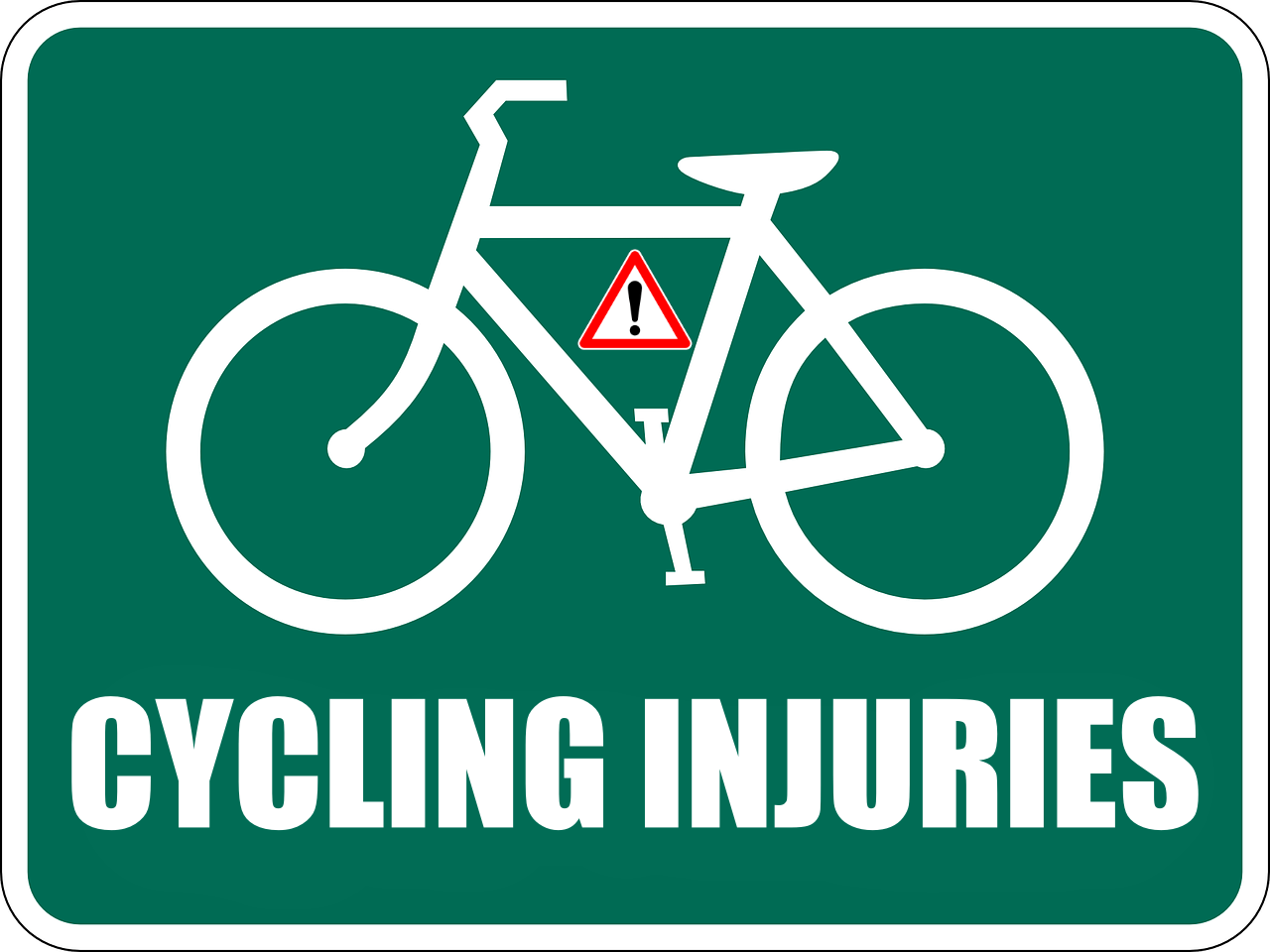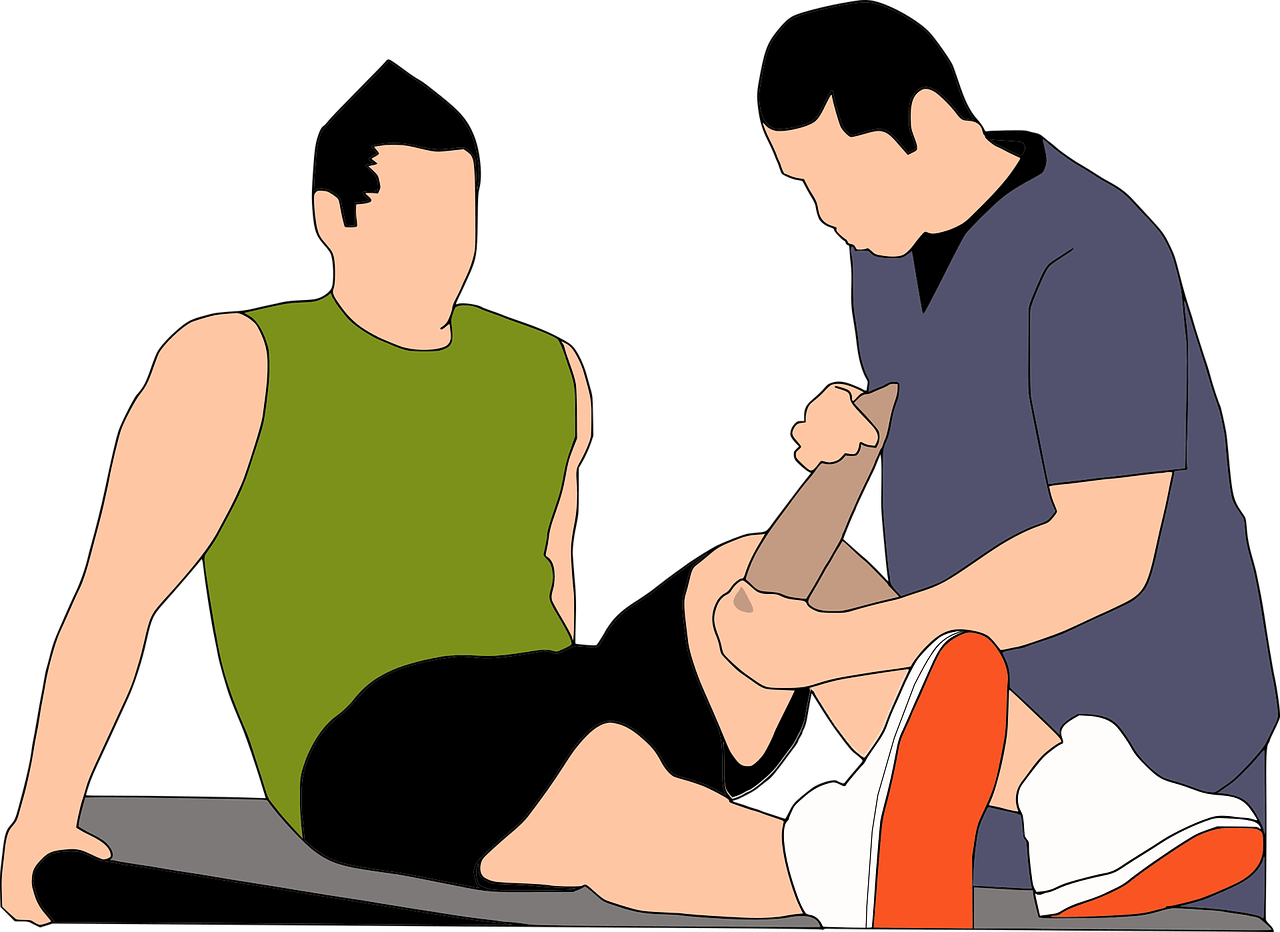When we love something we tend to give it all we got. Cycling included. We tend to push without realising our limits, which leads to injury. Taking a few precautions goes a long way in helping prevent cycling injuries.
The beauty of cycling is that until and unless you fall off your bike, chances are slim that you will get injured. Unlike contact sports like kickboxing or high impact sports like running, it is highly unlikely that you are going to injure yourself.
Too much of anything is bad, and when you ramp up the hours you spend on the saddle without having built a solid foundation, injuries rear their ugly head. The lower half of your body is performing a repetitive task, while the upper half is fixed in one position for extended periods of time. As the number of bike hours add up, these two aspects cause inflammation.
The injuries which commonly effect cyclists are:
Neck Pain
A common problem for people moving to drop bars for the first time and also first timers who might have bought a frame size too big on their MTBs and hybrids. If you are being forced to overreach to get your hands on the bars, then you would have to crane your neck to look further ahead. This can be a real pain in the neck, literally and figuratively!
Wrist, Forearms and Shoulder Pain
Different bikes have different ergonomics, but to generalise, road bikes will have you seated with far more weight on the front, MTBs less so and hybrids will offer the most upright sitting position. For someone just getting into cycling, even a hybrid could be sufficiently aggressive, putting too much weight on the hands which in turn causes pain in the wrists and forearms. If your arms are continuously pushing your body upright, then your shoulders will ache as well.
Lower Back Pain
A sore lower back is another common ailment which cyclists complain about. As is the case with the arms, the back hurts because of incorrect body position on the bike or frame size. The forward bent position over extended periods of time can cause muscular discomfort. Bike time coupled with office chair time can make for a dizzying cocktail of aches!
Saddle Sores
The worst nightmare of every cyclist! Not being able to sit on your bike’s saddle or anywhere else is a real pain in the backside. Chafing of the skin on the buttocks because of excessive time on the saddle can force even the best of cyclists to stay at home. Fortunately there are ways and means to reduce the possibility of saddle sores.
Tight IT Band
The pedal stroke is uniform. If an average cyclist pedals at a cadence of 80, then in an hour of riding, the rider has spun the pedals a whopping 4800 times. Now add up the number of hours you ride in a week and you can see how much your legs are following the exact same motion. One fallout of this continuous motion is the tightening of the iliotibial band over a period of time. This can cause further problems throughout the muscle range.
Knee Pain
Anterior and posterior knee pain is another common problem which is the direct result of incorrect bike fitting or overexertion, exaggerated with bad form. The pain can either occur towards the front or rear of the knee joint. Sportspersons are often plagued by this but for cyclists the reason is generally an incorrect saddle height.
Hot Foot
All the power you transfer from your legs to the road is through your feet. The pressure on the sole of your foot is constant. The pedals pushing up against the downward force, with every action having an equal and opposite reaction! This causes ‘hot’ spots or a burning sensation on the ball of your foot where the actual contact is.
Preventive Measures
As with everything else in life, prevention is better than cure. Following these simple pointers will help you keep injury at bay. Till you fall off your bike that is!
Correct Bike Fit
The solution to many problems. Getting a correct frame size and then making the necessary adjustments, go a long way in alleviating common injuries. A more comfortable handlebar position will help you sit upright taking some weight of the wrists and arms. This will also let you look ahead without hyper-extending your neck.
A saddle which is too low causes pain on the front of the knee, as you will be pushing through unnecessarily with each pedal stroke. On the other hand a saddle too high will cause pain at the rear of the knee as it continuously stretches the hamstring. With a proper fit and a correct saddle height, anterior and posterior knee pain can be avoided.
Saddle and Bibs
Quality bibs and saddles are worth their weight in gold. First try setting up your saddle correctly and see if it helps. If not, then it would be wise to invest in a better saddle as per your fittings and usage. Irrespective of what saddle you are using, get quality cycling shorts with a snug fit.
Gloves
If there is pain or numbness in the palms of your hands, then gloves can help. The numbness is caused by nerves getting pressed with the weight of your body on the handlebars. This doesn’t allow the blood to flow correctly. Cycling gloves and bartape/ grips will allow you to cover many miles without discomfort.
Stretching and Massaging
There are many theories to stretching for cyclists, which can be quite confusing. The important point is that for most leisure cyclists, just being fit on the bike isn’t enough, it is general fitness which one aspires for. And to that goal, stretching is extremely beneficial. Full body stretches will keep you much more supple and keep at bay a host of injuries which accrue from the repetitive movement of pedalling.
Massaging sore muscles, helps relax and recover faster. It also helps to loosen tightened and contracted muscles which cause injury in the long run.
Core Exercises
It can be quite irritating for cyclists to ‘waste’ time stretching and doing planks at home. All that they want to do is get out and ride their bike! But exercising your core will allow you to hold that aerodynamic tuck on your bike for a longer time without injury. Stronger core muscles help take the load of your lower back, providing considerable relief in the long run.
Pedals, Shoes and Cleats
If you are new to cycling, chances are high that you will be using flat pedals and running shoes. This often leads to the problem of ‘hot foot’. Using shoes with a stiffer, harder sole is helpful to distribute the load on the ball of the foot, when powering down.
Once you graduate to cycling specific shoes with cleats, make sure your cleats are positioned correctly. The wider the contact surface area, the better it is for transferring power and reducing injury. Shoes shouldn’t be too tight as this will restrict flow of blood.
Meditation
Yes, riding your bike is meditation. We have all seen those ‘inspirational’ quotes on Facebook and Instagram. But actually taking time off and meditating or at least cutting off the hubbub is useful on the bike as well as everyday life. When on the saddle, your mind should not be wandering around on life’s million problems. Meditation helps improve concentration levels tremendously.
Relax on the bike
If you are tense while riding, your body will be rigid and not absorb any of the shocks emanating from the road. Learn to relax. Loosen your grip on the handlebars, too tight and you have less control and will get tired faster. Drop your shoulders. If your shoulders are bunched up then you are tense, force your shoulders down. Check if your teeth are clenched and tongue is stuck to the palate. Drop your tongue and open your mouth, it will help your entire body relax.
Avoid Fatigue
A leisure cyclist isn’t out to win any prizes. Pushing your mind and body over the limit will eventually catch up. With fatigue mistakes tend to creep in. If you are tired, haven’t slept enough, take the day off. Doing this will help avoid crashes and other unnecessary incidents.
Rest Days
Howsoever much cycling is fun, it can be a case of too much of a good thing. If you aren’t following a proper cycle training plan, then take time off the saddle. This allows your mind and muscles to recover from the exertion and strain that you put it under when on the saddle.
Taking care of these few points will help you prevent cycling injuries.




5 Replies to “Start your cycle life, injury free!”